According to Einstein, the only thing you absolutely have to know is the location of the library. Reading a paper book is an experience that solaces our minds and nourishes our souls. Inspiration created by this traditional media can never be replaced by digital products. Modern libraries and bookshops are designed to protect authenticity of offline reading and address challenges of bringing together digital, analog, group, and individual interactions.
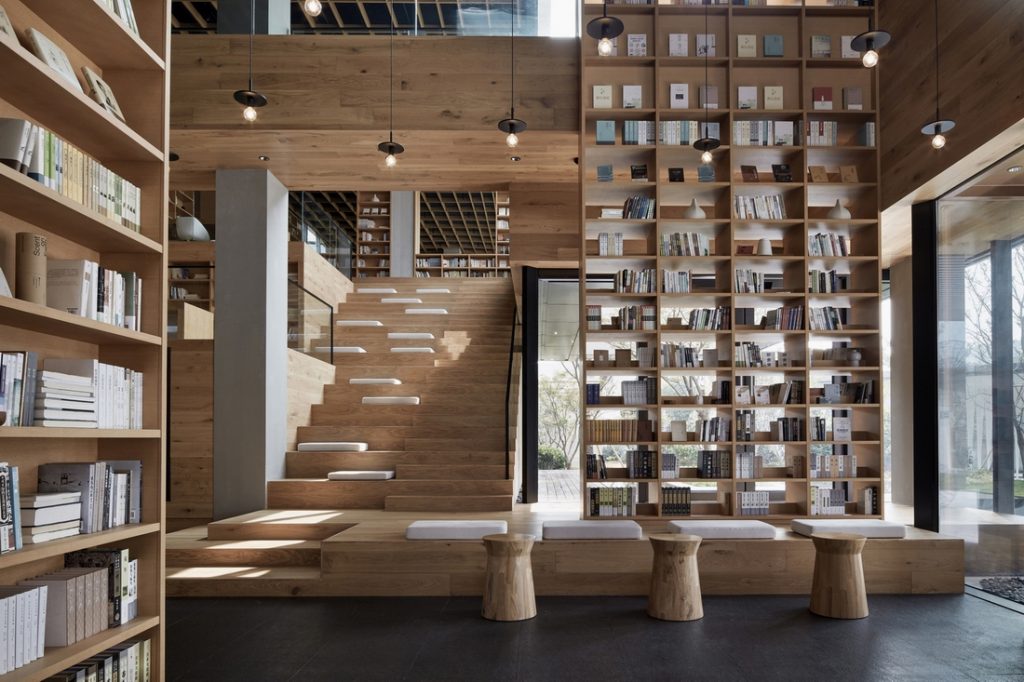

Yue Library by Beijing Fenghemuchen Space (also header image)
Designers Yi Chen and Muchen Zhang of Chinese firm Beijing Fenghemuchen Space Design have developed a shared space for both cultural experiences and community services in Hangzhou. The project integrates a reading-themed living space with a social platform based upon coffee experience.

Yue Library by Beijing Fenghemuchen Space
The project manages to embed culture into everyday life and presents an intimate environment for cultural life in the local community. The 10-meter-high interior space is divided into several horizontal layers, forming platforms for various activities. In addition to the reading area and the coffee area, the Yue Library provides local communities with multiple possibilities of cultural experiences, including reading and book borrowing, literature and arts salon, movie concerts, international music festival, a children’s playground etc.
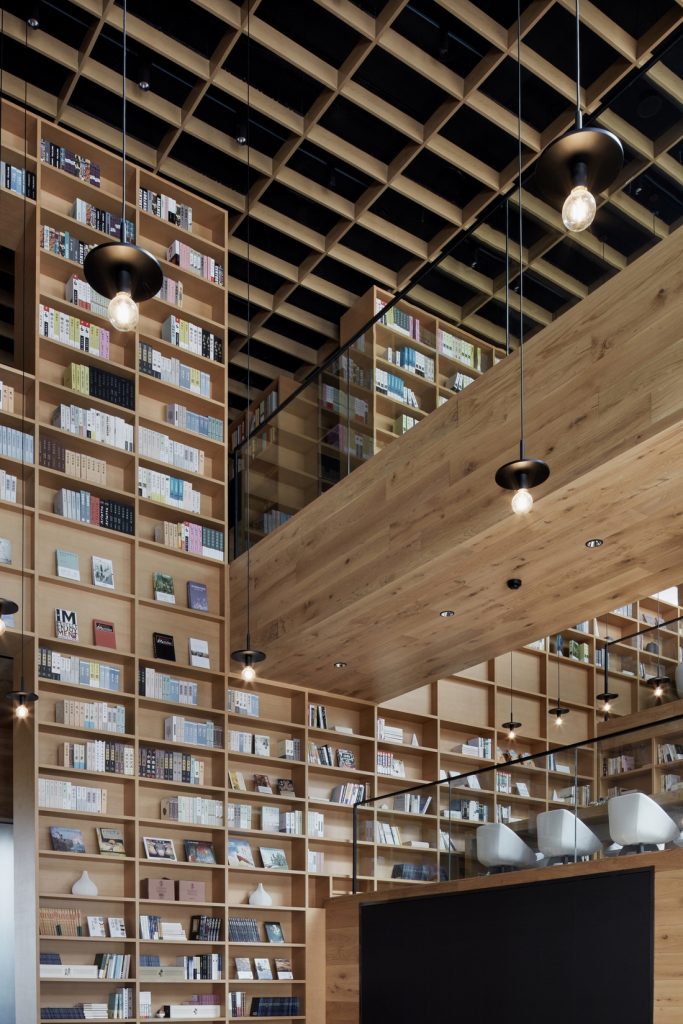
Yue Library by Beijing Fenghemuchen Space
The designers try to keep the use of materials and design language to a minimal degree. Natural wood is largely used in the space to create a strong ecological ambience, making the space a soothing and relaxing retreat from urban pressure. Large glass wall allows natural light in, at the same time providing open view for the natural beauty of the garden outside. The wall-like bookshelves create the impression of wandering in a forest of books.
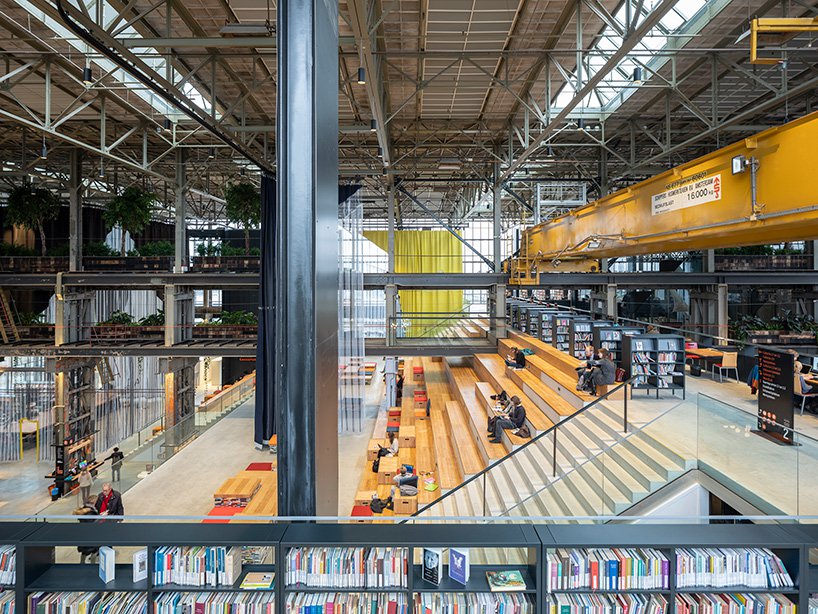
LocHal by Civic Architects and Inside Outside/ Petra Blaisse. Ph: Ossip Architectuurfotografie
Civic Architects in collaboration with Inside Outside studio led by Petra Blaisse developed a project for the LocHal, a converted train repair hall in Tilburg, the Netherlands that now houses a major public library, an art foundation and a public meeting place with a distinct railway theme.
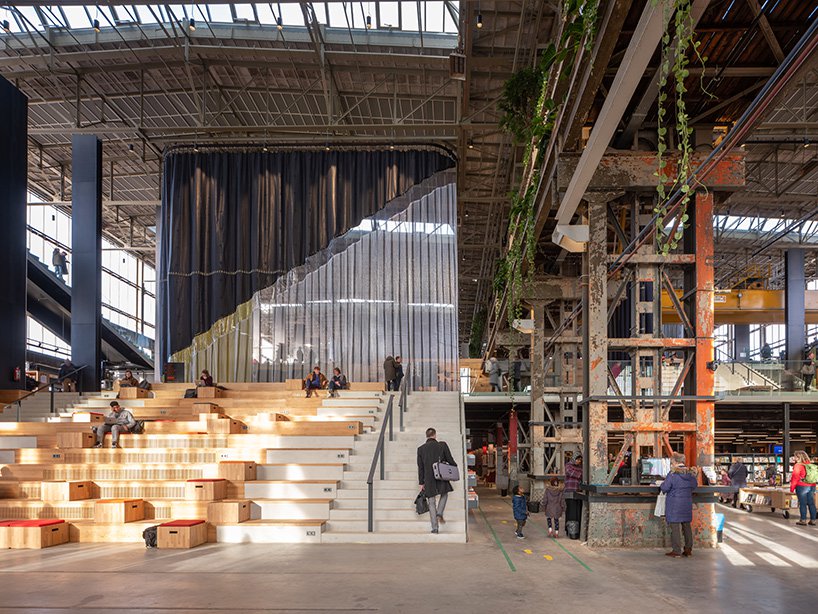
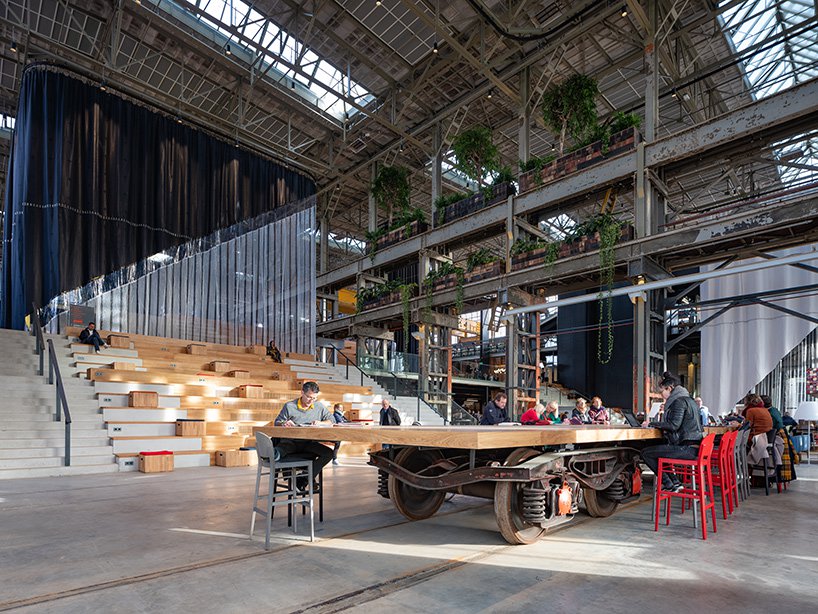
LocHal by Civic Architects and Inside Outside/ Petra Blaisse. Ph: Ossip Architectuurfotografie
Much of the original building is preserved, the industrial columns still have layers of paint on. The entrance hall resembles a covered city square, that features large public reading tables also serving as podia and is flanked by broad steps taking visitors to the upper floors. The steps also double as flexible event seating which can accommodate up to one thousand visitors. Huge textile curtains divide the hall into smaller spaces for events that require a certain degree of privacy.
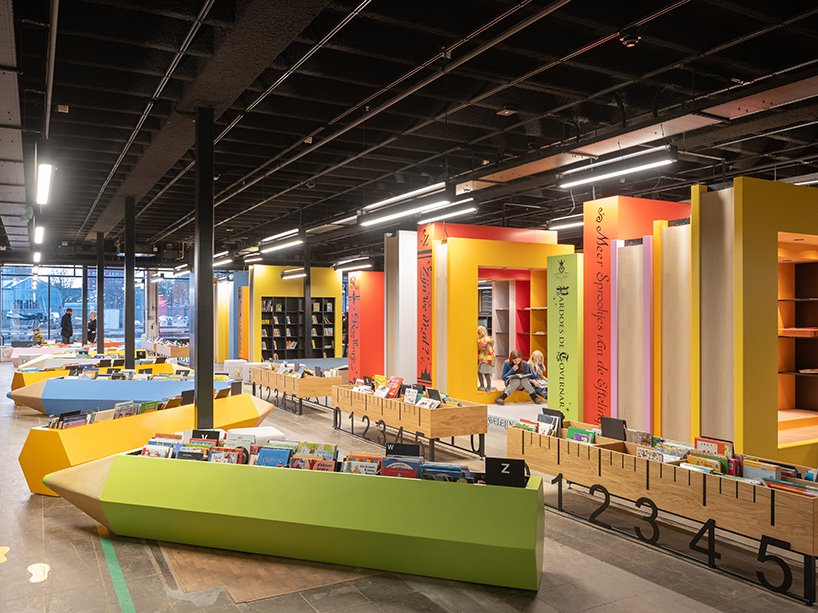
LocHal by Civic Architects and Inside Outside/ Petra Blaisse. Ph: Ossip Architectuurfotografie
The LocHal is aimed to give a new meaning to the function of a library in the digital age. The interior street traversing the building is lined with bookcases and low mobile display units presenting literature as if in a bookshop, while bookcases in children’s library take on the form of coloured pencils and rulers, which creates an impression of walking through giant fairytale books.
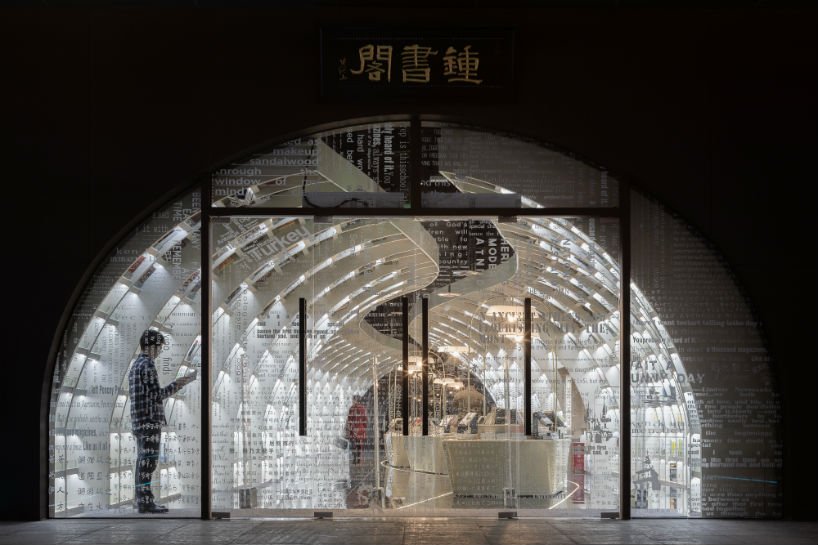
Zhongshuge in Guiyang by X+Living
Shanghai-based firm X+Living develops experiential spaces for the famed Zhongshuge bookshops and libraries, meeting the task ‘to create the most beautiful reading experience space for readers, where they harvest nqqot only wisdom from books, but also the perception and sedimentation of life.’
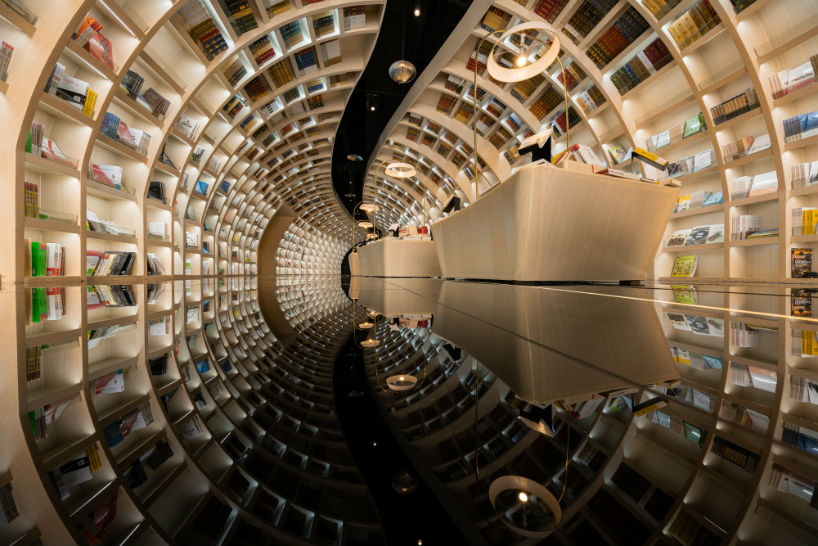
Zhongshuge in Guiyang by X+Living
The bookshop in Yun Shang Fang Zhou in the general area of Guiyang, China is designed as an immersive corridor that looks like a portal into another dimension, with the curved bookshelves of light coloured wood overhead that are mirrored in the super-reflective floor surface. The bookstands resembling ships support the flowing sensation of moving across the pitch black corridor.
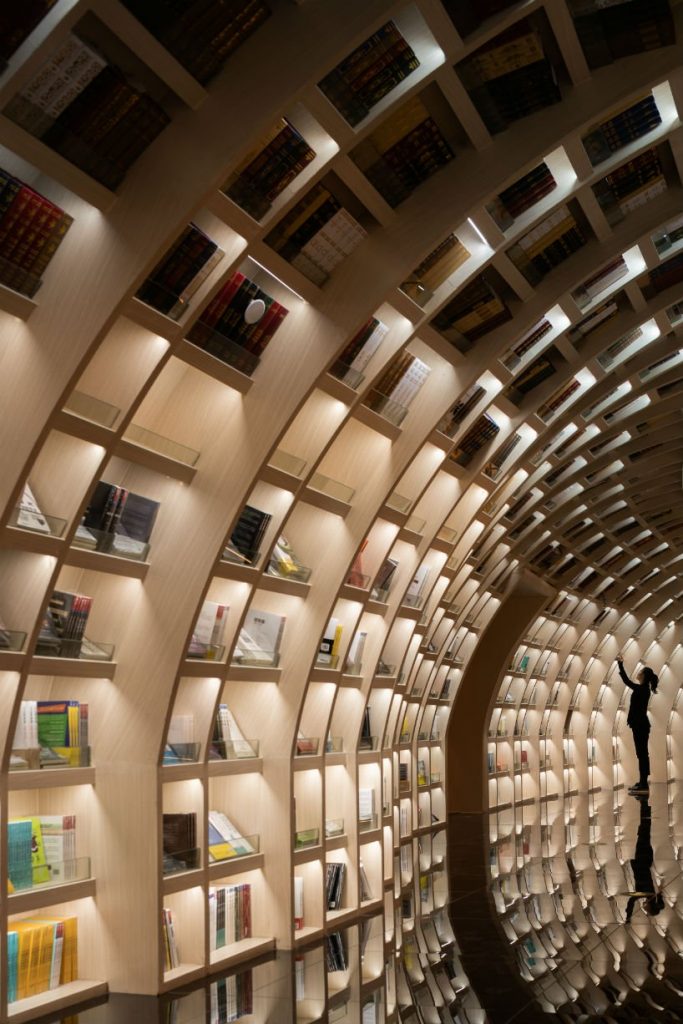
Zhongshuge in Guiyang by X+Living
The corridor emulating a stalactite grotto leads to the boutique reading area featuring more intimate study rooms and the lecture hall imitating terrace fields through staggered seating and appearing as a monumental space, with the stage in the center. More bookshelves surround the space, with the reflective ceiling making the space seem infinite.
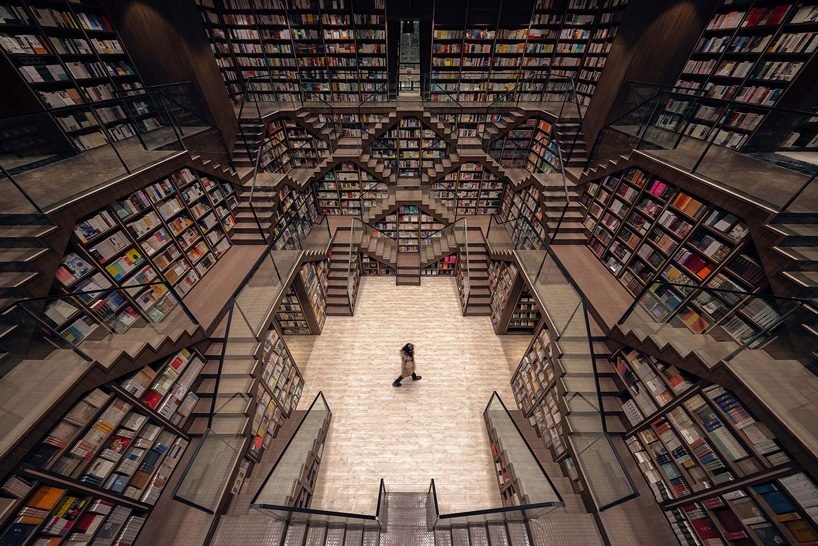
Zhongshuge in Chongqing by X+Living
The two-floor store Zhongshuge bookstore in Chongqing offers an immersive visual experience featuring lampshade-shaped bookshelves, a reading area with the Escher-like stairs doubling as bookshelves, mirrored ceilings and a colorful children’s library with drawings of the city’s landscape, buildings and transportation.
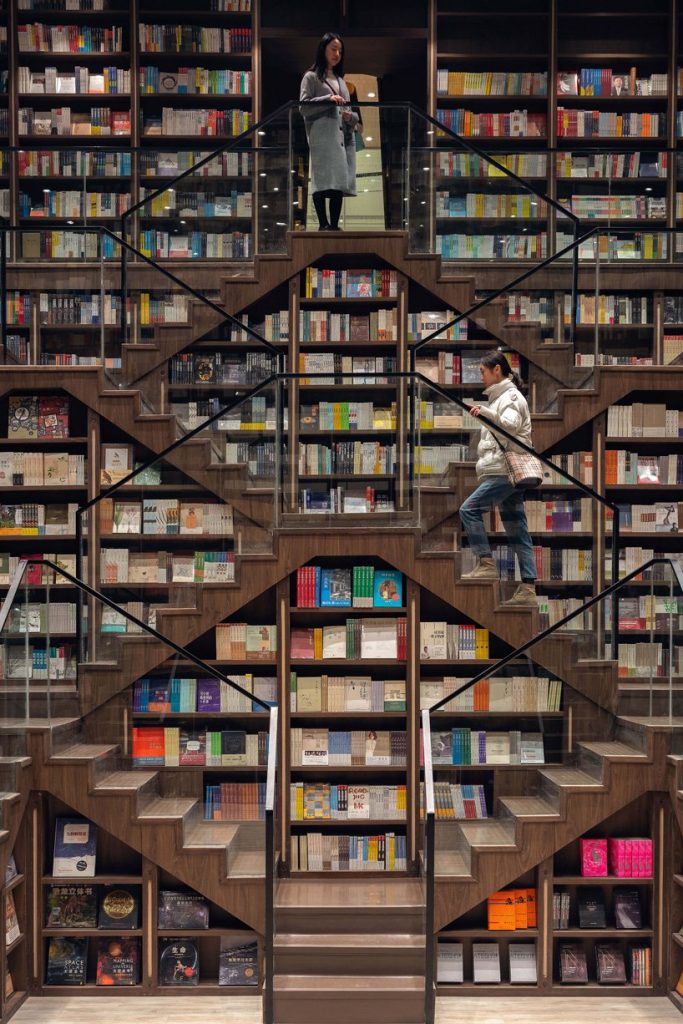
Zhongshuge in Chongqing by X+Living
The tunnel of books formed by bookshelves in a quiet reading corridor seems to be drawing visitors deeper ‘into the space and knowledge’.
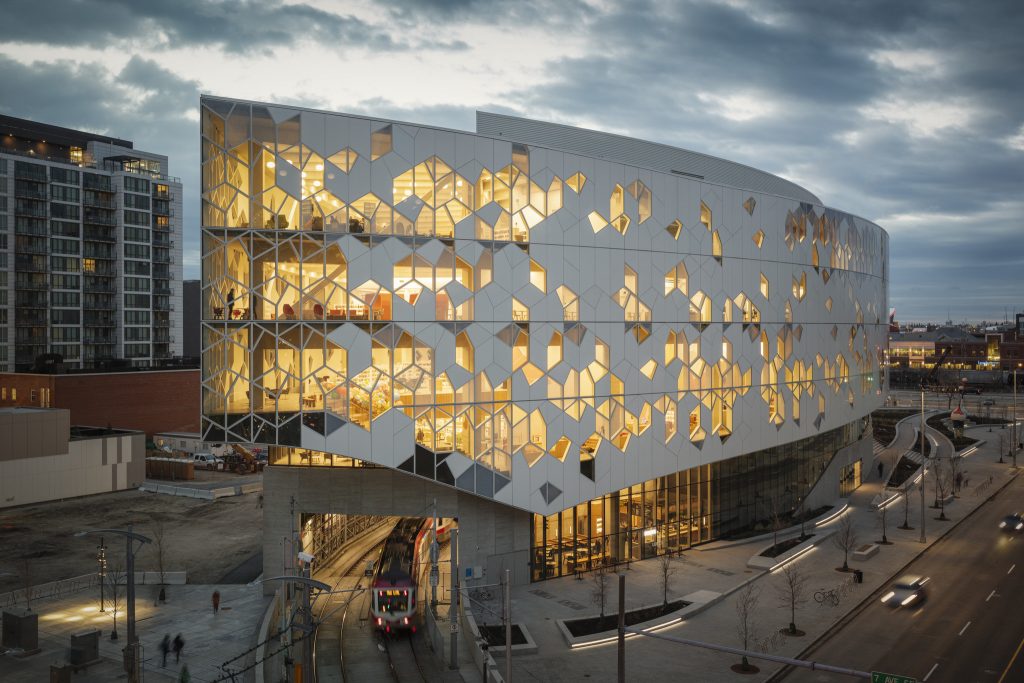
Calgary’s Central Library by Snohetta
Norwegian Snohetta has developed Calgary’s new Central Library for one of the most actively used library systems in North America. Located in a complex urban condition, with the railway line crossing the site from above to below ground, the building’s entry plaza doubles as a portal and a bridge connecting two neighbourhoods.
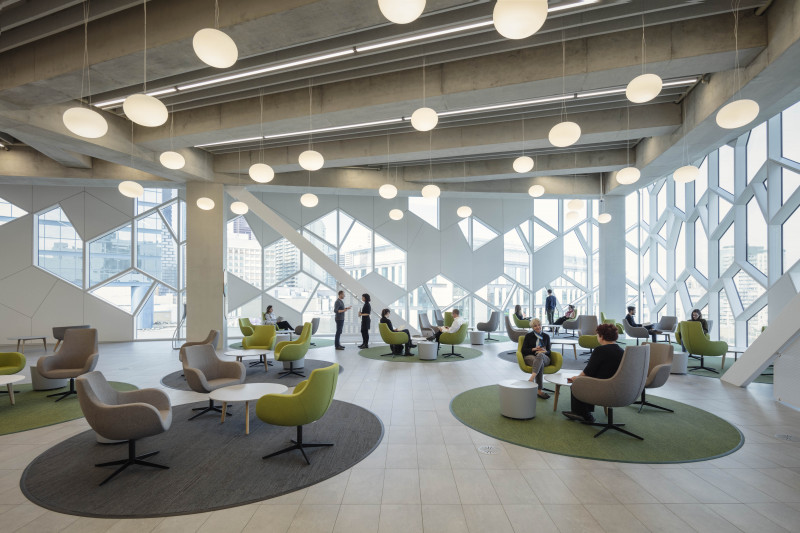
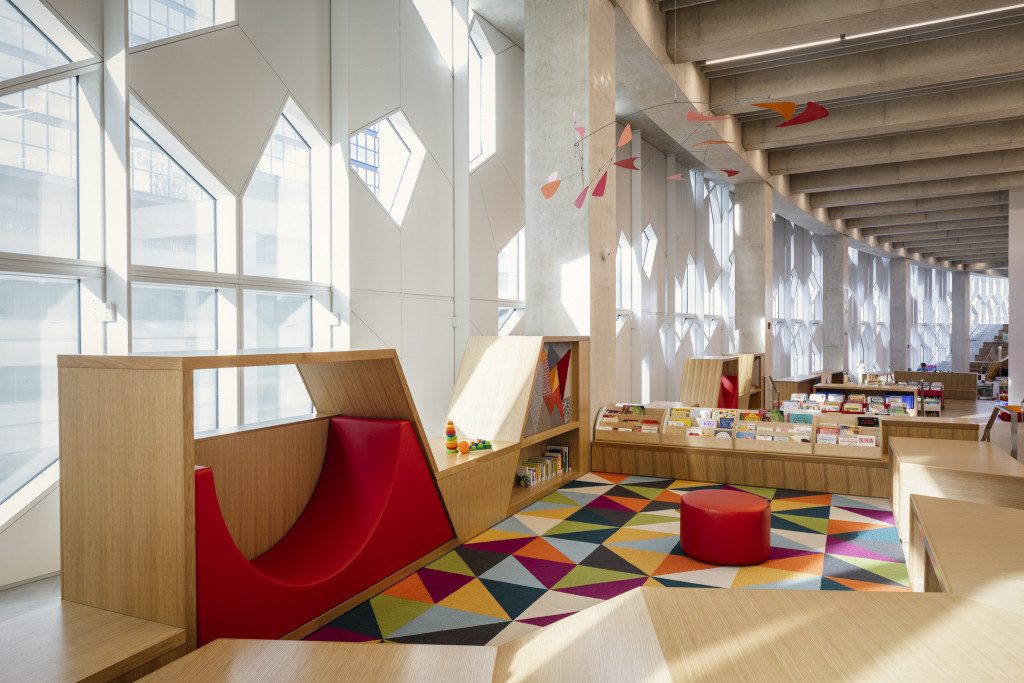
Calgary’s Central Library by Snohetta
The dynamic crystalline geometry of the façade is carved away to reveal an expansive wood archway referencing the Chinook cloud arches common to the region. Variations of the hexagonal pattern that forms the facade scatter across the building’s curved surface in alternating panels of fritted glass and iridescent aluminum. Parts of the pattern might resemble familiar shapes of an open book, snowflake-like linework, or interlocking houses, anchoring the ideas of the collective and community.
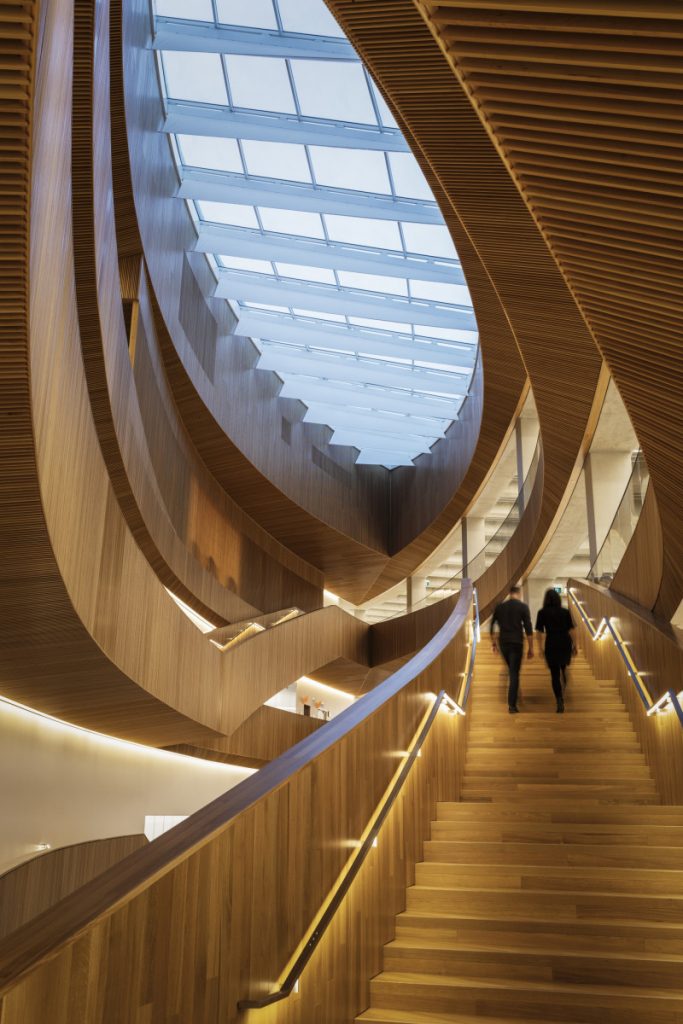

Calgary’s Central Library by Snohetta
Organized on a spectrum of ‘Fun’ to ‘Serious,’ the library locates the livelier public activities on the lower floors, gradually transitioning to quieter study areas on the upper levels as one spirals upwards. Wood slats line the perimeter of the open atrium, serving as an orientation device for people to quickly grasp the organizational logic of the library’s floorplan.